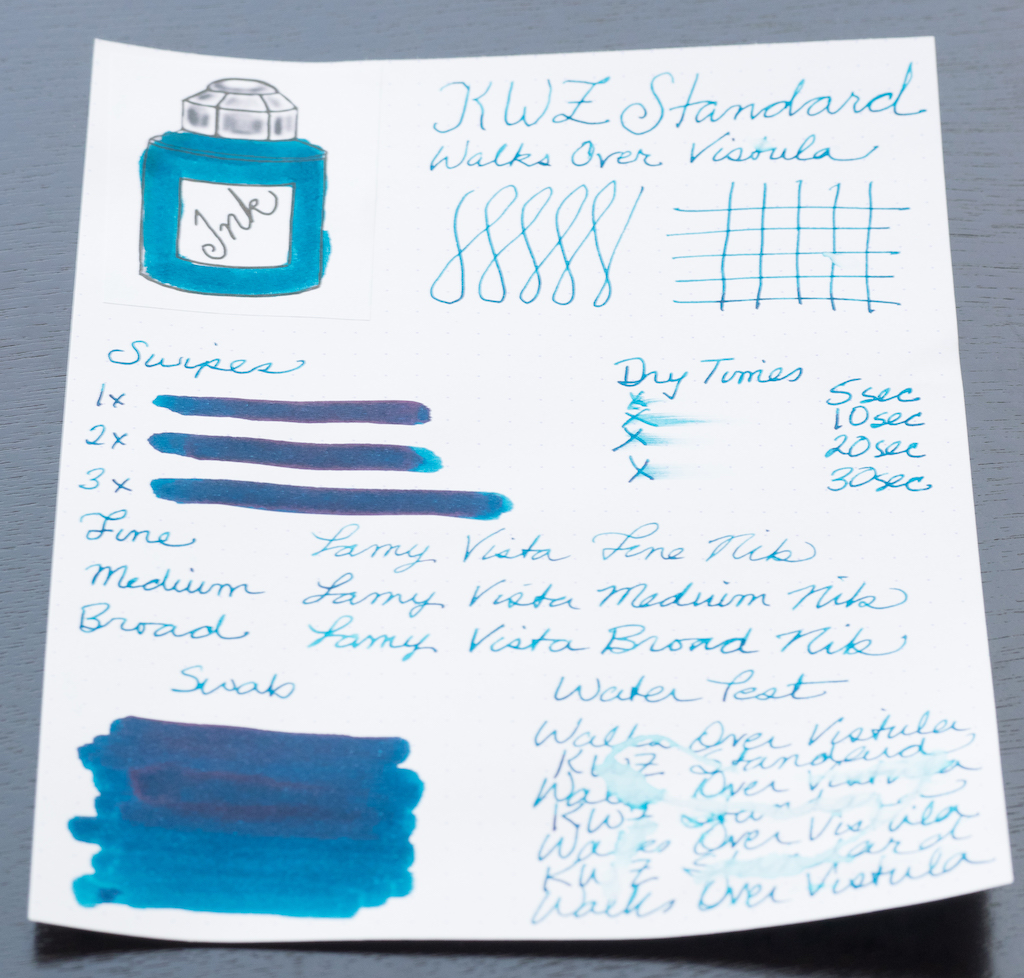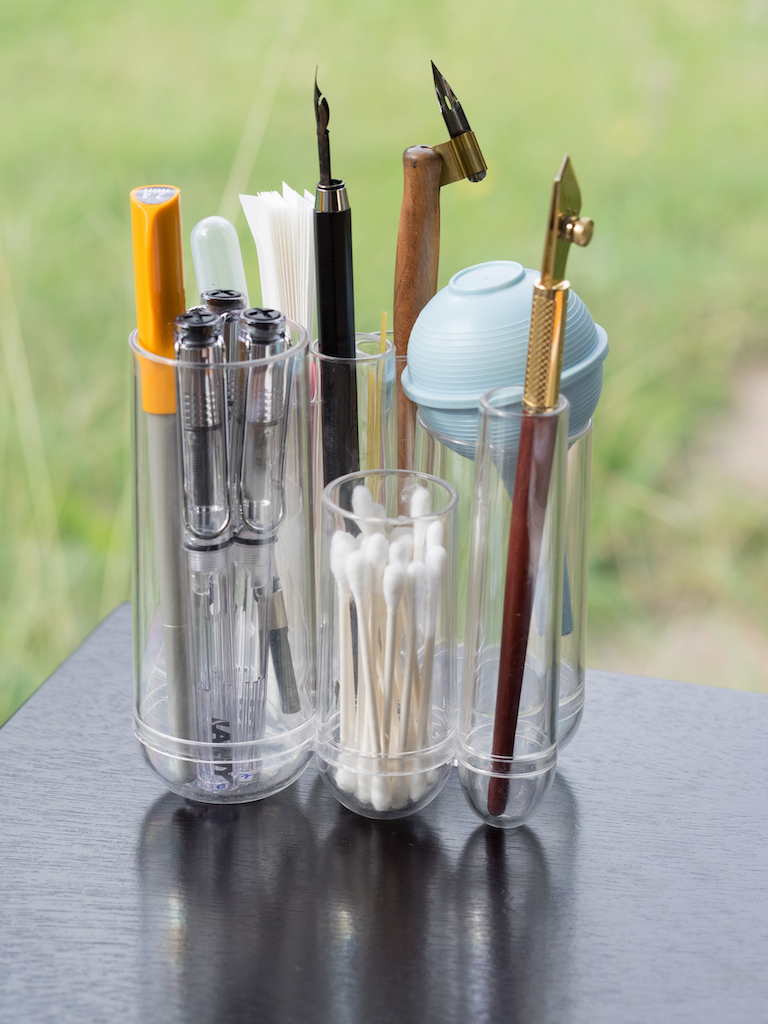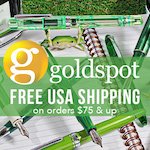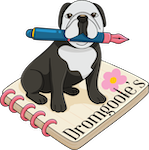(Susan M. Pigott is a fountain pen collector, pen and paperholic, photographer, and professor. You can find more from Susan on her blog Scribalishess.)
Sometimes there’s an ink you see on the Internet in a review or on Instagram that you simply must have. It doesn’t matter if that ink is difficult to obtain or if it comes in a dinky 20ml bottle or if it’s expensive, or if you have to wait weeks for it to arrive from Japan--you buy it anyway. Sailor Ink Studio 123 is one of those inks.
I first saw 123 on Mountain of Ink’s review of Set 1 of Ink Studio inks. I was mesmerized by this strange and magical unicorn ink that shifts between gray, green, and purple depending on its mood.
Sailor Ink Studio is a collection of one hundred inks (out of 20,000 created!) that were blended by inkmeisters at Ink Studio events. Each number represents a unique blending code (source: Sakura Fountain Pen Gallery).
I purchased my 20ml bottle of 123 from an eBay seller who stocks the collection (although you’ll discover that 123 is often out of stock). I paid $21.49 for the bottle (including shipping). It took about two weeks to arrive.
Although the bottle is tiny, I am not disappointed with this ink. It really is unique and magical, but it isn’t necessarily the most practical color for writing since it can be very light and hard to read depending on the paper.
For my initial ink test, I used Rhodia paper and a TWSBI Eco with a 1.1mm stub. The ink shows up well on white paper and looks like a dusty purple with the stub nib. But, the swabs fluctuate between gray, green, and lavender. The ink is not waterproof, but it dries quickly.
Note: The ink is much more washed out in this photo than in person.
In my Lamy Vistas (fine, medium, and broad) the ink looks more gray than lavender, but it sort of depends on the light and angle.
On my Col-o-dex card, the swab looks like a summer storm in Texas, complete with that green tint that promises hail. The ink shades beautifully, but it doesn’t have any sheen.
Chromatography reveals the complexity of this ink blend. I’ve never seen an ink separate out into so many different colors. This really is unicorn ink!
Sailor 123 shines in great, big, juicy nibs. Just look at that gorgeous shading and color shifting on MD Cotton paper:
The only time the ink fell short of expectations was (much to my surprise) on Tomoe River paper. I don’t know why, but the ink comes out as a super light lavender, and all that miraculous shading and color-shifting seems lost. Maybe it’s the cream color of the paper, I’m not sure, but I got the same results in my Kanso Sasshi booklet (picture below) and my Hippo Noto journal (both Tomoe River paper).
Regardless, I am in love with Sailor 123. It looks best on white paper with wide to super-wide nibs so you can see the color shifts. But, even in wet fine, medium, and broad nibs, it’s usable (though it looks more like a simple gray-lavender ink). This is also a terrific ink to use as a wash.
I ordered Sailor 442 as well, which is a darker color than 123. I’ll be reviewing it sometime soon. It’s certainly a more readable color than 123, but it doesn’t show the range of shades that 123 does.
Enjoy reading The Pen Addict? Then consider becoming a member to receive additional weekly content, giveaways, and discounts in The Pen Addict shop. Plus, you support me and the site directly, for which I am very grateful.
Membership starts at just $5/month, with a discounted annual option available. To find out more about membership click here and join us!

































